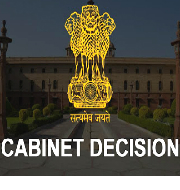Cabinet approves raising Rs. 9020 crore for Long Term Irrigation Fund
The Union Cabinet gave its approval for raising Extra Budgetary Resources of up to Rs, 9,020 crore for Long Term Irrigation Fund (LTIF) during the financial year 2017-18.
The funds will be raised by the National Bank for Agriculture and Rural Development (NABARD) through the issuance of Bonds at 6% per annum as per requirement.
Utilization of Funds
The LTIF will be for the implementation of Accelerated Irrigation Benefits Programme (AIBP) works of 99 ongoing prioritised irrigation projects along with their command area development (CAD) works under the Pradhan Mantri Krishi Sinchayee Yojana (PMKSY).
Background
Large number of major and medium irrigation projects taken up under the AIBP were languishing mainly due to inadequate provision of funds. To cater to the large fund requirement and ensure completion of these projects, the Union Finance Minister in his Budget speech 2016-17, had announced creation of dedicated LTIF in NABARD with an initial corpus of Rs. 20,000 crore for funding identified ongoing projects under PMKSY (AIBP and CAD). The corpus of LTIF was to be raised through budgetary resources and market borrowings to fast track implementation of incomplete major & medium irrigation projects.
Pradhan Mantri Krishi Sinchayee Yojana (PMKSY)
PMKSY has been formulated amalgamating ongoing schemes viz. AIBP, Integrated Watershed Management Programme (IWMP) and On Farm Water Management (OFWM) component of National Mission on Sustainable Agriculture (NMSA). It is implemented by Ministries of Agriculture, Water Resources and Rural Development.
Objectives of PMKSY: (i) Achieve convergence of investments in irrigation at the field level, (ii) Expand cultivable area under assured irrigation (har khet ko pani), (iii) Enhance the adoption of precision-irrigation and other water saving technologies (More crop per drop), (iv) Improve on-farm water use efficiency to reduce wastage of water, (v) Enhance recharge of aquifers and (vi) Introduce sustainable water conservation practices.
Month: Current Affairs - August, 2017


